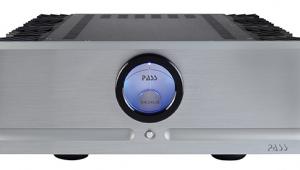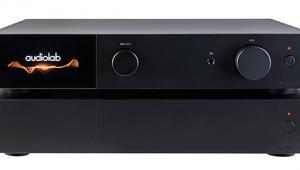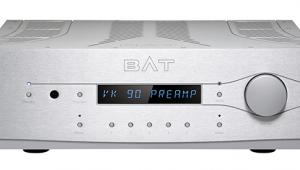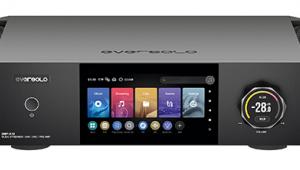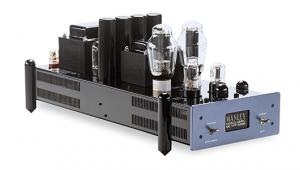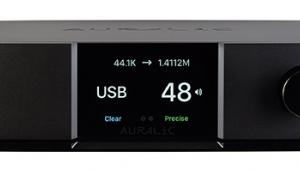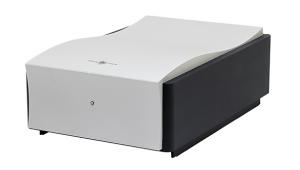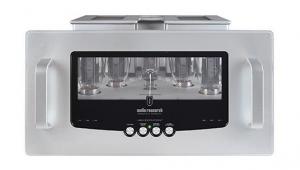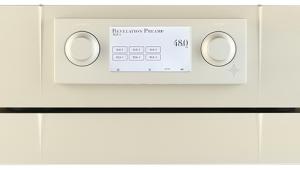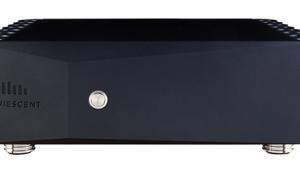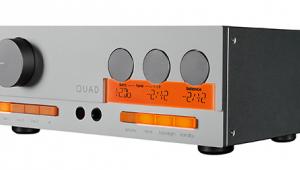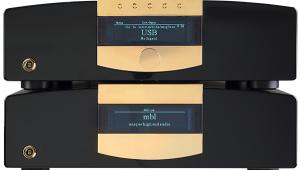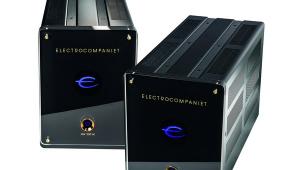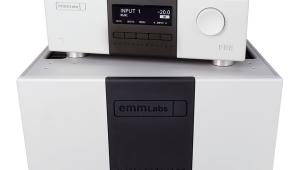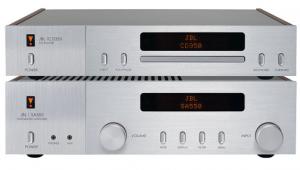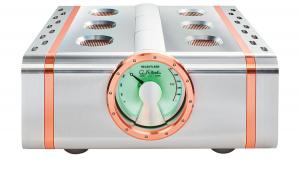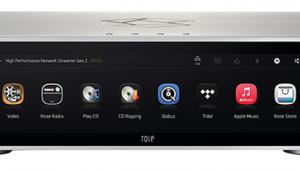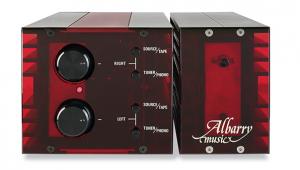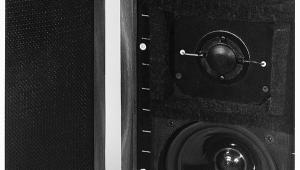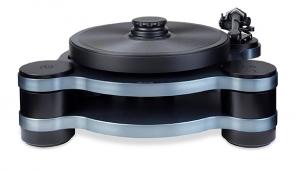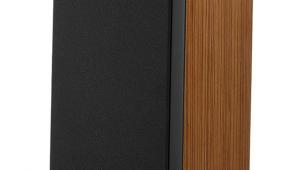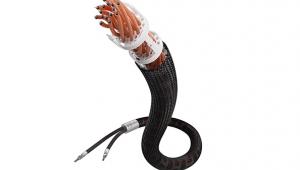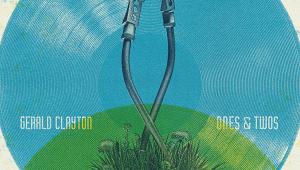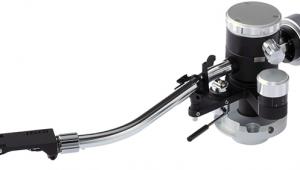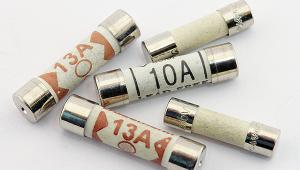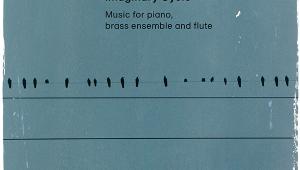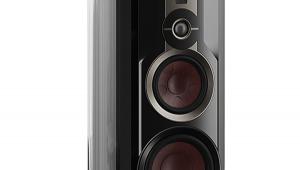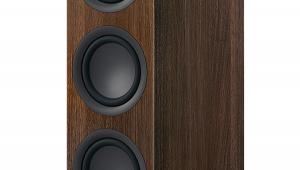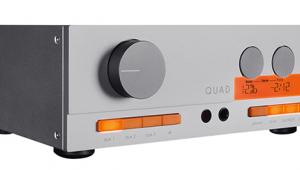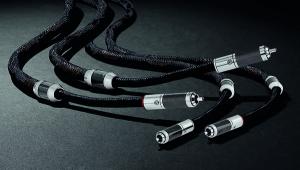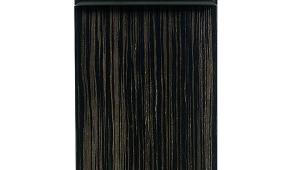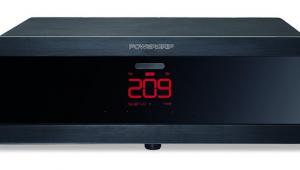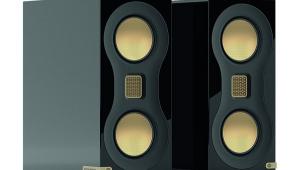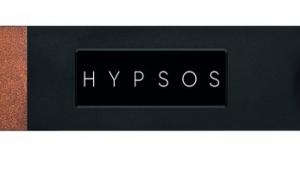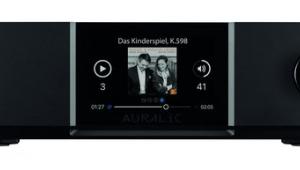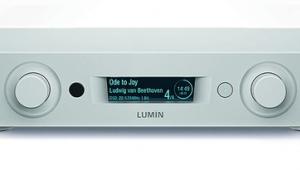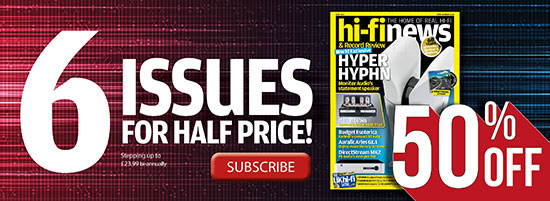Fezz Audio Sagita Prestige/Titania pre/power amp
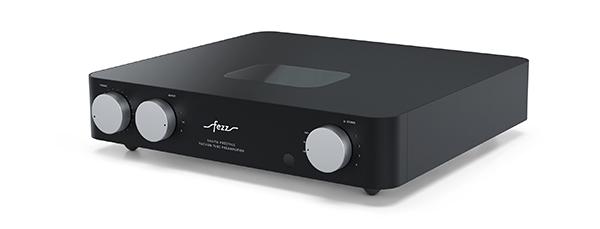

Baffled by its name, I assumed Polish manufacturer ‘Fezz’ took it from its distinctive toroidal transformer covers, which reflect the shape of the famous Moroccan hat if not the city itself. Here was a valve amplifier with the full complement of toroidal transformers – not all that common with tubes – but there’s even more novelty to the Sagita Prestige preamplifier (£3499) and Titania power amplifier (£3495). Eastern European price advantages are just the start.
Which is not to say that Fezz Audio was new to me. I have seen it every year that I’ve attended the wonderful audio show in Warsaw [HFN] and marvelled at how so much was delivered for so little. The products of a company which specialises in transformers, it is said by Fezz – based in north-eastern Poland – that 80% of its components are made in-house in Kolonia Koplany. That’s the kind of boast you get from most high-end watch brands but precious few hi-fi manufacturers.
Trooping the colour
Which reminds me, the stunning looks are the result of Fezz Audio employing award-winning industrial designers, recipients of a Red Dot. The looks of both amps are minimalist, but there’s no sense of deprivation. The UK prices include a beautifully machined remote [see boxout] which handles on/off, level and source select, and a smart valve cage – both optional in other territories. The concern for aesthetics extends to the available colours of black, maroon, red, dark green, silver, a white-ish finish, dubbed Republika, and a dark gold called ‘Sunlight’.
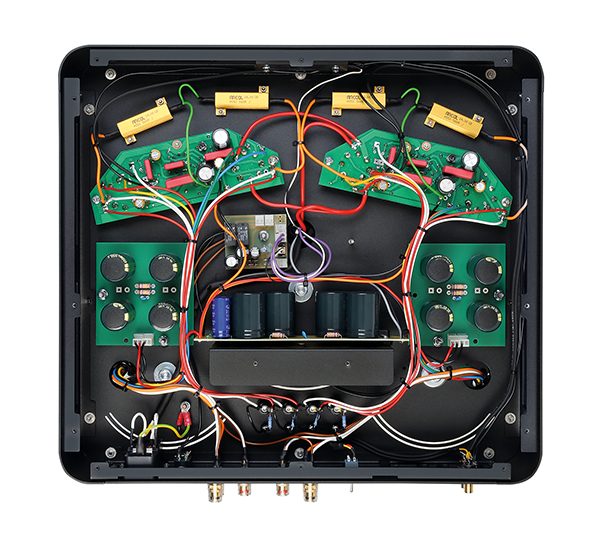
The Sagita Prestige is a line-level-only control unit (for vinyl users, the vast Fezz range includes seven phono stages and transformers) but don’t let the uncluttered fascia suggest hair-shirt minimalism. The rotary on the left controls volume, and next to it is a selector for one of four outputs. Over to the right is another rotary that chooses from its array of seven inputs. The Fezz logo in the middle lights up when powered on.
There are two oddities here, however, as the supplied stereo Titania power amp’s input is RCA-only – although others in Fezz’s catalogue, including the Olympia monoblocks, offer balanced inputs. Another detail which puzzled me was dedicating a rotary to select the Sagita Prestige’s output, when a balance control would have been of more use. Most users employ one set of outputs at a time, so toggle switches on the back could have served just as well.
Stacks appeal
As you’d expect with all those inputs and outputs, the rear panel of the Sagita Prestige is fully packed, even though the unit occupies a generous 420x95x380mm (whd). As you can see, it’s rather deep, and weighs a substantial 11kg – important caveats for shelf requirements. Should you care to stack the components, you might on occasion want to reach the preamp’s top, as there’s a see-through panel over the two 12AU7/ECC82 valves, which you press down and slide for access. But how often does one swap tubes?
Setup simplicity
From left to right, the rear panel carries the primary on/off above an IEC socket. Then there’s the voltage selector and the signal ground on/off switch, which proved useful in eliminating an earth loop in my set-up and spared me having to find two-core AC cables or look for other culprits. Next are RCAs for two unbalanced outputs, four line inputs and a ‘direct’ line level connection. Lastly are XLR sockets for the two balanced inputs and two balanced outputs. All sockets are of high quality, further attesting to the amp’s value for money.
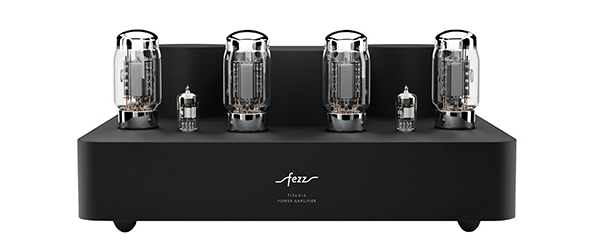
The Titania’s footprint is identical to that of the Sagita Prestige, but if you are stacking the power amp on top of the preamp, you might want to ask a friend to help, because the former weighs 21kg. It’s about as straightforward to install as a stereo power amp can be, though, with absolutely nothing other than the illuminated Fezz logo on the front, and six valves – four KT88s and two ECC83s – to fit according to the numbers on the boxes in which they’re shipped. The Titania’s auto-biasing obviates any further installation concerns beyond fitting the valve cage.
The back of the amplifier is equally non-daunting. Here there’s a pair of RCA inputs, speaker terminals for notional 4ohm or 8ohm loads, an IEC mains input and on/off switch, stereo/mono switch to convert this 2x45W amp into a 90W monoblock, and another signal ground on/off switch. But please, before proceeding any further, read [see PM’s Lab Report] in the boxout [below, left] regarding the Titania’s sensitivity to loudspeaker impedance.
![]() Pole vaulting
Pole vaulting
Allowing the two units to warm up for several hours before listening (I don’t want to hear any component ‘cold’ lest it create an unjustifiable negative first impression) meant that I was put into the same frame of mind as when I auditioned the E-Glo 2 MM/MC phono stage from EAT]. What I heard was a pure, unapologetic valve presentation, and not quite what I had expected of the Fezz Titania. I had always been told that valve amp manufacturers typically eschewed toroidal transformers on the basis they hardened the sound…
That clearly wasn’t the case because this Fezz Audio combination sounded diametrically opposed to that purported criticism, at least via my sensitive DeVore Fidelity O/93s [HFN Mar ’23]. The lower registers were deep and rich, if slightly less taut than some might like. Listening to ‘When I’m 64’ from The Beatles’ Sgt. Pepper’s Lonely Hearts Club Band [Parlophone PCS7027] – one of my preferred recordings for challenging a system’s bass reproduction – the Fezz combo delivered enough extension and control to remind any listener that Paul McCartney was a master of the instrument even at the age of 24. For a song that’s initially a cute ditty paying homage to music hall, it’s absurdly funky thanks to Macca.
At the same time, I was distracted (in a good way) by the glorious, almost cavernous three-dimensionality of the soundstage. The Fezz duo created a super-wide rostrum for the entire album, extending audibly beyond the outer edges of the DeVore O/93s and seeming to ignore the walls. Front-to-back depth was far better than average, but it was image height that elevated (groan…) the performance to a level way above the price class. I had to keep telling myself that this pre/power pair cost less than the moving-coil cartridge I was using.
Reel story
To try out the Sagita Prestige’s balanced inputs, I turned to open-reel tape, playing a bizarre mix of orchestral and spoken word. Rod McKuen’s Listen To The Warm [RCA TP3-5040] is one of those embarrassing relics from the same year as Sgt. Pepper but which is dated enough as to now seem comical. That said, the sound quality was/is exceptional, McKuen’s slightly dry voice over lush backing providing a set of interesting contrasts which allowed this Fezz duo to demonstrate its way with layering.
Of course, a lone voice in front of musical backing doesn’t demand the levels of separation required of, say, massed vocals or an orchestra to reveal this type of prowess. Rather, the tape proved the Fezz pre/power to possess transparency and openness in defiance of hoary, clichéd criticisms of valves. That is not to say it emulates solid-state in this area, avoiding clinical clarity. Instead, it lets the listener know that the resolution is such that one can listen into the recording if so desired.
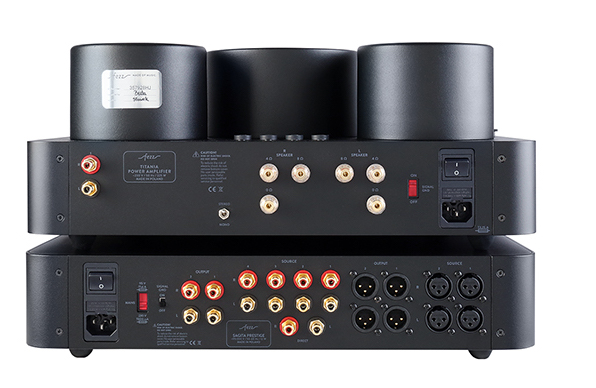
What was decidedly ‘un-solid-state’ and classically valve was the strings section, but I suspect it’s because the Titania isn’t overly crisp at the top. Instead of this being a negative, it resulted in a more-ish sound that detoured for miles around aggression or sibilance. Some might find this performance too soft, but I would imagine the best way to decide what one thinks of these amplifiers’ top end solidity is to hear them with the loudspeakers to which they will be paired.
As a midband addict, since the bulk of my preferred musical diet is vocal, I fed the Fezz system a number of tracks from the Dearly Beloved box set [Cherry Red CD3BRED908], a multi-artist collection of Prince songs as performed by others. With more than 50 artists from which to choose, running through The Bangles’ ‘Manic Monday’ to Sheena Easton’s ‘Sugar Walls’ to Jonny Lang’s ‘I Am’ was particularly illuminating. The authenticity of the voices was impressive, especially when one considers these are variously sourced studio-generated recordings with lord knows how much processing.
With the overly familiar (to me, at any rate) ‘Manic Monday’, the tinkly piano was crisp and bell-like, free of too much edge without sacrificing transient attack – a nifty balancing act which reaffirms the all-valve mien. This actually benefitted the song, as it was recorded in the 1980s when aggressive treble was considered a virtue. The group’s vocals were easily separable, though it’s not that difficult to do when the lead singer’s voice is as distinctive as Susanna Hoffs’ pipes.
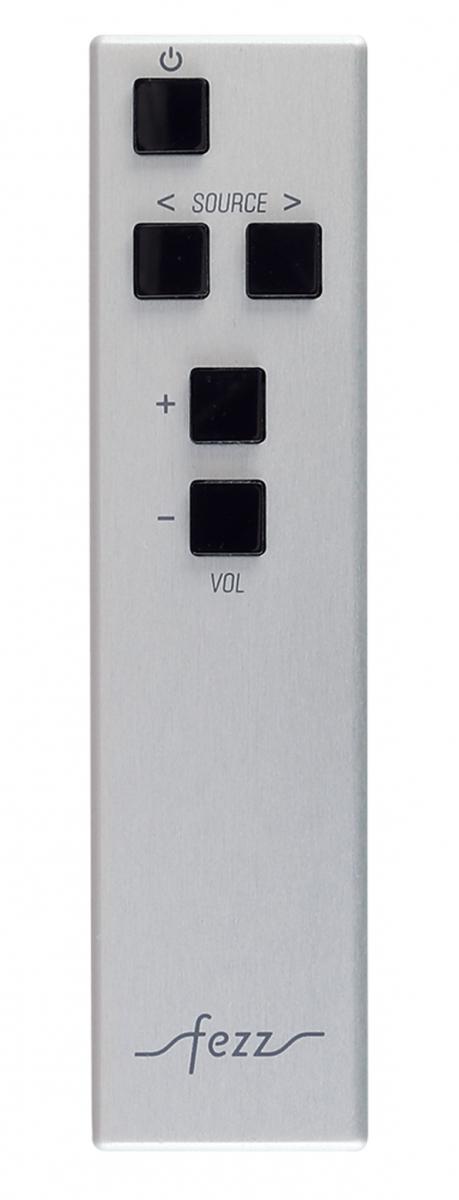
Jekyll and Hyde
Sheena Easton’s singing is nothing like Hoffs’ and the midband was revealing enough to allow a listener to go into full-on analytical mode if so required. For both, the nuances – a charming touch of nasality with Hoffs, heightened clarity with Easton – were perfectly preserved. What I didn’t expect, after a few hours of politesse and composure, was the Fezz combo exposing its lasciviously evil twin. Jonny Lang is a blues guitarist of note, and the growling bottom-end of the rhythm section and his piercing guitar had all the impact and attack one would desire, while – as with ‘Manic Monday’ – the backing vocals were sweet and even angelic.
Tubular belles
This far into the valve revival, which started in the 1980s, it’s almost farcical to acknowledge that the tubes-vs-transistors rivalry was once ‘a thing’. The two have coexisted for decades like red wine and white, or for that matter, analogue and digital. But it’s important when approaching the Fezz components, once you’ve recovered from the alluring prices and build quality, to appreciate the tube/transistor dichotomy. This Fezz pre/power pairing – toroidal transformers and all – is an unalloyed treat for unrepentant valve fetishists. No, make that a gift.
Hi-Fi News Verdict
Value-for-money seems to have no bearing on the high-end, but try not to be seduced by the exceptional price-to-performance ratio of Fezz Audio’s Sagita Prestige and Titania. Aside from lacking OCD levels of detail recovery and ultimate grip in the bass, this pair delivers so much more than one dares expect for £7000 that the word ‘bargain’ will follow it around. But always audition with your own speakers!
Sound Quality: 85%
